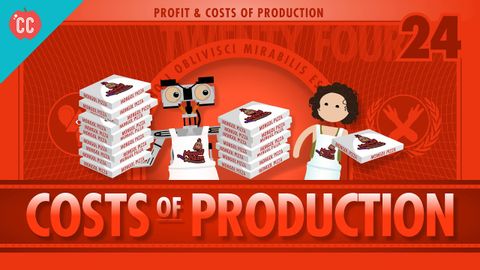収入、利益、価格。クラッシュコース経済学 #24 (Revenue, Profits, and Price: Crash Course Economics #24)
盧濤 が 2021 年 01 月 14 日 に投稿  この条件に一致する単語はありません
この条件に一致する単語はありませんUS /ˈævərɪdʒ, ˈævrɪdʒ/
・
UK /'ævərɪdʒ/
- n. (c./u.)平均
- v.t.平均する
- adj.典型的な : 普通の : ありふれた : 普段の
US /ˌɑpɚˈtunɪti, -ˈtju-/
・
UK /ˌɒpə'tju:nətɪ/
- n. (c./u.)機会;好機;仕事の機会;ビジネスチャンス
US /ˈbɪznɪs/
・
UK /ˈbɪznəs/
- n. (c./u.)会社;(取り組むべき重要な)事柄 : 仕事 : 状況;商売 : 経営;業界;活動;権利;目的;舞台でのちょっとしたしぐさ;義務 : 任務;経営学;取引量 : 商況;ビジネスロジック
- adv.仕事で;本気で : 真剣に
- adj.通常通り
US /ˈkʌmpəni/
・
UK /'kʌmpənɪ/
- n. (c./u.)仲間;会社;客;同伴;中隊;劇団
エネルギーを使用
すべての単語を解除
発音・解説・フィルター機能を解除

